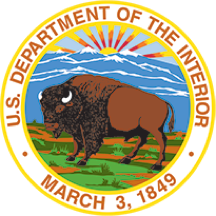News and Updates
Innovative work, news, and ideas from people and teams in government
IT warning banners: How GSA is working to stop unnecessarily frightening users
OMB Memo M-23-22 discourages the use of pop-ups and modals. GSA IT updated security policies so that IT warning banners are presented less intrusively to users.
Department of Labor, General Services Administration to centralize government benefits information on USA.gov and USAGov en Español
In September 2024, Benefits.gov will be discontinued, with its services and information moved to USA.gov and USAGov en Español. This change, which aligns with Executive Order 14058: Transforming Federal Customer Experience and Service Delivery to Rebuild Trust in Government, aims to create a seamless, user-friendly experience for accessing government benefits in both English and Spanish. The new platform, with a focus on equitable access to information, will feature improved navigation and benefit-finding tools.— via General Services Administration

Supporting innovation through the American Rescue Plan
GSA uses American Rescue Plan funding for over 40 initiatives to foster community, improve user experiences, and empower underserved populations.
Reassessing priorities: Adapting to additional work without additional resources
The Office of Natural Resources Revenue’s Open Data, Design, and Development (ODD) team is taking on management of a fourth website, despite being short-staffed. As a result, they have revisited and reprioritized their yearly goals. To do so, they utilized a prioritization matrix, developed a structured impact assessment, and laid out a transition plan. Their process ensured realistic workload adjustments, improved team morale, and highlighted the importance of practical goal-setting, especially when teams are short-staffed.— via Office of Natural Resources Revenue

Designing for people with disabilities
The User Experience (UX) team at USA.gov’s Public Experience Portfolio recently conducted a study to analyze the experiences of individuals who access USA.gov through assistive technology. The team partnered with a local organization to gather insights from a diverse group of participants, many of whom are blind or deaf. The study revealed various habits and challenges faced by these users, such as a preference for mobile sites, difficulty with website carousels, and a reliance on clear headings and action-oriented descriptions. These findings can guide improvements in accessibility, such as clever link labeling and better navigation aids for assistive technology users.— via USA.gov

18F’s engineering craft practices at 10
18F recently celebrated its 10th anniversary by renewing its commitment to refining and sharing best practices through regular publications, tech talks, and updates to The 18F Engineering Guide. They also instructed a permanent principal consulting engineer role to enhance digital service delivery and support skill development within the organization.— via 18F

18F’s engineering craft practices at 10
18F recently celebrated its 10th anniversary by renewing its commitment to refining and sharing best practices through regular publications, tech talks, and updates to the 18F Engineering Guide. They also created a permanent principal consulting engineer role to enhance digital service delivery and support skill development within the organization.— via 18F

A small team’s journey through digital maturity
As a small team, Digital.gov adopted user research and customer experience early. That foundation helps develop evidence-based strategies for today.
Evaluating your agency’s accessibility just got a whole lot easier with GSA’s OpenACR Editor
To help agencies evaluate the accessibility of their digital products, GSA is making it easier to create Accessibility Conformance Reports through its new OpenACR Editor.
Bridge the gap between policy and implementation: Impactful solutions and strategies for success from Digital.gov’s spring 2024 summit
The summit highlighted digital transformation, emphasizing the significance of recent OMB memos for improving accessibility and customer experience.
Digital front door: Expanding access to VA
More Veterans are turning to the U.S. Department of Veterans Affairs (VA) for healthcare and benefits, accessing these services online through tools like the VA Health and Benefits mobile app and VA.gov. With over 2.28 million app downloads and 17.8 million monthly visitors on VA.gov, these digital tools provide faster, easier, and more inclusive access to VA services. Learn more about how these technologies are often Veterans’ first interaction with VA by watching their latest video, Digital Front Door: Expanding Access to VA.— via U.S. Department of Veterans Affairs

Unsolicited data: A valuable resource for digital customer experience enhancement
Optimizing federal service touchpoints involves analyzing both actively-sought and spontaneous feedback, introducing new metrics and data points.
Back to basics in the age of AI
The federal government is actively discussing the transformative potential of artificial intelligence (AI). It has the potential to transform our digital service delivery, automate tasks, and enhance data analysis. However, AI also presents challenges and risks such as bias and ethical concerns. The team at 18F provides a quick overview of AI, its place in government today, and the techniques and frameworks they are currently using to navigate this complex new landscape.— via 18F

How the U.S. Department of the Navy is delivering IT that just works
The U.S. Navy’s Program Executive Office for Digital and Enterprise Services is working to revolutionize how information technology is acquired.
Federal customer experience: OMB has taken actions to implement cross-agency priority goals
In 2021, the President’s Management Agenda identified federal customer experience as a priority area for improvement. To implement this priority area, the Office of Management and Budget (OMB) set two long-term, cross-agency priority (CAP) goals. In this study, the Government Accountability Office (GAO) reviews OMB and selected federal agencies’ efforts towards these CAP goals. Learn about actions taken by OMB and selected High Impact Service Providers (HISPs), how OMB has facilitated interagency collaboration, and the extent to which OMB has overseen and assessed progress on these CAP goals.— via Government Accountability Office

Case study: Removing barriers to applying for a presidential pardon
At the Department of Justice, Access DOJ and the Office of the Pardon Attorney (PARDON) partnered to simplify and streamline the presidential pardon application process. By conducting usability testing and gathering feedback, they identified key issues with the existing application, such as its complexity and length. See how redesigning the forms to be more accessible and understandable led to a more efficient process for both applicants and staff.— via Department of Justice

Case study: Increasing access to required bankruptcy meetings
The Department of Justice’s U.S. Trustee Program (USTP) oversees the administration of bankruptcy cases and private trustees. During the COVID-19 pandemic, virtual Section 341 bankruptcy meetings lead to more participation from both consumers and creditors, minimized delays, and saved time and money for all. Learn about USTP’s human-centered design process for a pilot program in three states to increase public access to these virtual meetings.— via Department of Justice

Equity study reaches 4,000 participants
Launched last fall, the General Services Administration equity study on remote identity proofing aims to determine if biases exist in the algorithms used for online identity verification. The study has now reached its goal of recruiting 4,000 participants from diverse communities, and experts are ready to begin analysis of the data. Learn how the team at GSA plans to conduct this data analysis, and how their findings will lead to improved equitable services delivery in technology across the government.— via General Services Administration











